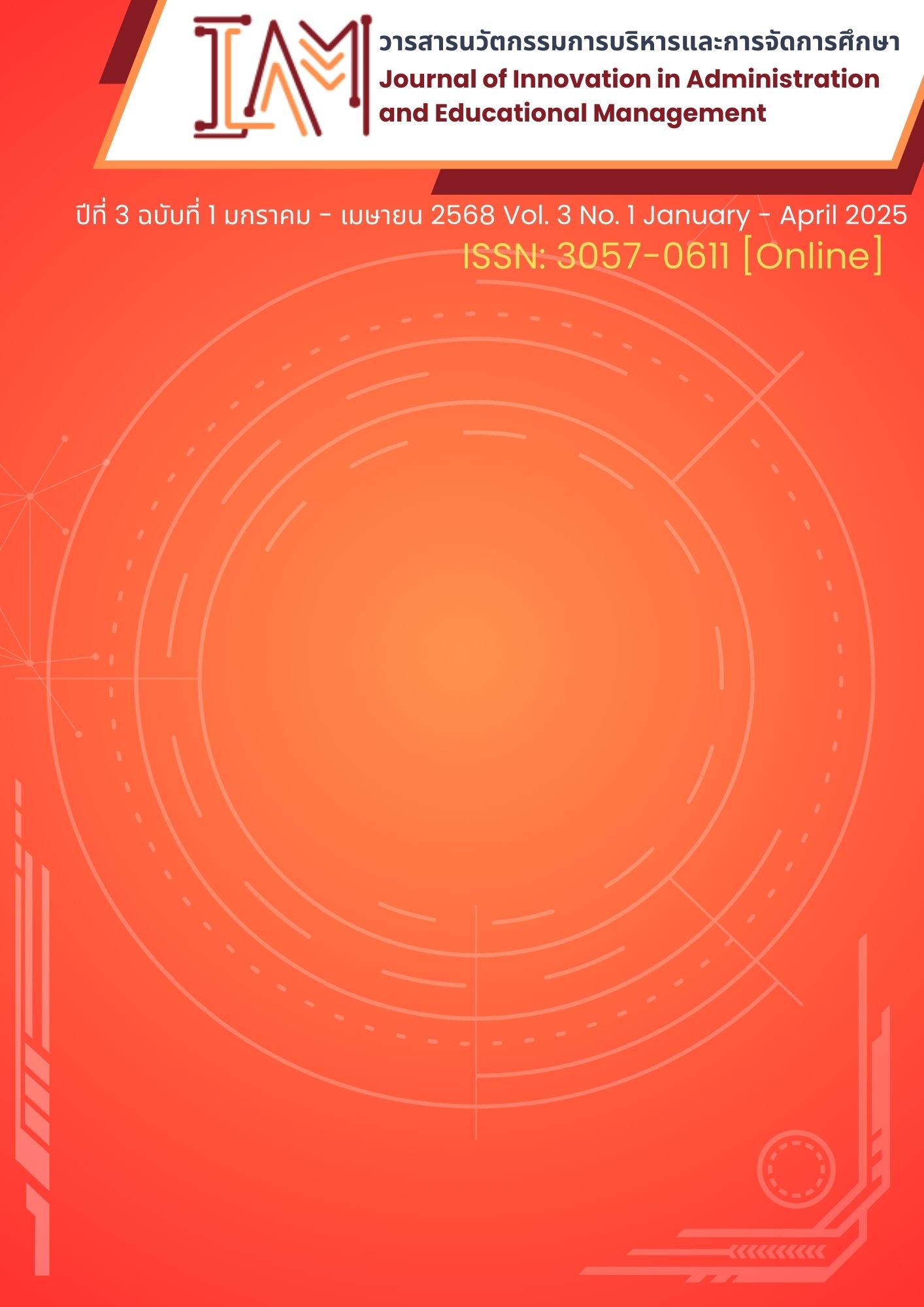Intelligent Student Grouping with “Altair Studio K-means AI” The Helper for Teachers Digital Era
Keywords:
Grouping of Smart Learners, Altair Studio K-mean, Teachers Digital EraAbstract
This academic article aims to introduce the grouping of gifted students using AI with Altair Studio and K-means. These tools are considered essential for teachers in the digital age who wish to apply technology to enhance teaching and learning. Altair Studio is a data analysis platform with the capability to cluster data using K-means clustering, an unsupervised learning technique. Grouping students using K-means helps teachers analyze and categorize students based on specific learning characteristics, allowing them to tailor teaching strategies effectively for each group of students. Altair Studio is user-friendly and suitable for teachers without programming knowledge. Users can import student data, such as academic performance, learning behaviors, or other insights, and quickly apply K-means to group students. Moreover, Altair Studio allows teachers to create learning materials, such as infographics, to present the analysis results in a clear and easy-to-understand way. The use of Altair Studio in grouping students helps teachers plan lessons that are tailored to each student group effectively, while also increasing student engagement in the learning process. Additionally, it enables teachers to better understand the specific characteristics of students, making the assessment and improvement of teaching more accurate and targeted.
Downloads
References
ชัยยงค์ พรหมวงศ์. (2537). สรุปการสัมมนาวิชาการ เรื่อง เทคโนโลยีและสื่อสารการศึกษาไทยในกระแสโลกนุวัตร. กรุงเทพฯ: จุฬาลงกรณ์มหาวิทยาลัย.
เนาวนิตย์ สงคราม. (2567). ศาสตร์นวัตกรรม ศาสตร์แห่งการเรียนรู้ในยุคเทคโนโลยีดิจิทัล. กรุงเทพฯ: สำนักพิมพ์จุฬาลงกรณ์มหาวิทยาลัย.
อุทิศ บำรุงชีพ. (2566). นวัตกรรมสร้างสรรค์เพื่อการเรียนรู้สู่ความเป็นพลเมืองดิจิทัล. ชลบุรี: ชลบุรีการพิมพ์.
Altair Engineering Inc. (2024). Altair® AI Studio Data Science Design Software. Retrieved November 8, 2024, from https://altair.com/altair-ai-studio
Apriyani, P., Dikananda, A. R., & Ali, I. (2023). Penerapan algoritma K-means dalam klasterisasikasus stunting balita desa Tegalwangi. Hello World: Jurnal Ilmu Komputer, 2(1), 20 - 33.
loom, B. S. (1984). The 2 sigma problem: The search for methods of group instruction as effective as one-to-one tutoring. Educational Researcher, 13(6), 4 - 16.
Google Cloud Thailand. (2023). Generative AI Studio on Google Cloud. Retrieved October 4, 2024, from https://medium.com/google-cloud-thailand/
Ibrahim, Mubaraka. (2020). LEARNING STYLE DETECTION USING K-MEANS CLUSTERING. FUDMA JOURNAL OF SCIENCES. 4(3), 375 - 381.
IBM. (2023). IBM Watson Studio. Retrieved November 8, 2024, from https://www.ibm.com/products/ watson-studio
Keller, J. M. (1983). Motivational design of instruction. In C.M. Reigeluth (Ed.), Instructional-design theories and models: An overview of their current status. Hillsdale, NJ: Lawrence Erlbaum, Publisher.
Microsoft. (2024). Azure Machine Learning Studio. Retrieved October 2, 2024, from https://azure.microsoft.com/en-us/products/machine-learning
Mayer, Richard & Moreno, Roxana. (2005). A Cognitive Theory of Multimedia Learning: Implications for Design Principles. Retrieved November 8, 2024, from https://www.researchgate.net/ publication/248528255_A_Cognitive_Theory_of_Multimedia_Learning_Implications_for_Design_Principles
Seels, B. B., & Richey, R. C. (2012). Instructional technology: The definition and domains of the field. Iap. Washington DC: Association for Educational Communications and Technology.
Sudirman, Windarto, A., & Wanto, A. (2018). Data mining tools | RapidMiner: K-means method on clustering of rice crops by province as efforts to stabilize food crops in Indonesia. In Proceedings of IOP Conference Series: Materials Science and Engineering (pp. 1-8). IOP Publishing.
Supianto, A., Sa'diyah, N., Dewi, C., Indah R, R., Wicaksono, S. A., Az-zahra, H., Wijoyo, S., Hayashi, Y., & Hirashima, T. (2020). Improvements of fuzzy C-means clustering performance using particle swarm optimization on student grouping based on learning activity in a digital learning media. In Proceedings of the 5th International Conference on Sustainable Information Engineering and Technology (pp. 239-243).
Tuyishimire, E., Mabuto, W., Gatabazi, P., & Bayisingize, S. (2022). Detecting learning patterns in ertiary education using K-means clustering. Information, 13(2), 1 - 14.
Downloads
Published
How to Cite
Issue
Section
License
Copyright (c) 2025 Journal of Innovation in Administration and Educational Management

This work is licensed under a Creative Commons Attribution-NonCommercial-NoDerivatives 4.0 International License.






